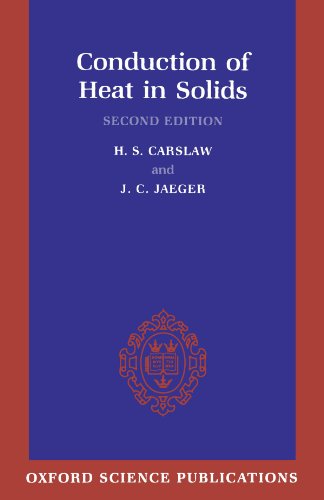Conduction of Heat in Solids ebook
Par wilson karen le mardi, novembre 22 2016, 04:52 - Lien permanent
Conduction of Heat in Solids by H. S. Carslaw, J. C. Jaeger


Conduction of Heat in Solids H. S. Carslaw, J. C. Jaeger ebook
Format: djvu
ISBN: 0198533683, 9780198533689
Page: 517
Publisher: Oxford University Press, USA
Conduction occurs mainly in solids. Home made 6x7 tilt shift camera, tominon 127mm f4.7,red filter, Ilford PanF 50, Ilfosol3. There is a simple solution, but first let's learn a little about heat conduction: 1. Let's talk about heat – solids, liquids, and gases are made up of molecules. Conduction is heat transfer within solids or between contacting solids. Convection is heat transfer by the movement of liquids or gasses. Here are quick definitions, how they apply to your attic, and how to fix them: 1. Conduction and Convection Conduction is most important in Solids. Conduction: Heat is disorderly kinetic energy of molecules and/or vibration of molecules depending on if the matter is solid liquid or gas. Houses lose a lot of heat through their windows even when they're shut. The concept of air sealing ties in with how insulation works and how heat moves. Heat Conduction(Linear and Radial Heat Conduction in Different Types of Solids)Objectives: 1. Thermal energy moves in three different ways: by conduction, convection and radiation. Conduction is essentially heat transfer through solids. Most liquids are poor conductors of heat. All gases are poor conductors of heat. Heat can be transferred from one place to another by three different methods, namely Conduction, Convection and radiation. How is heat transferred in solids? Monsieur Be • Conduction of heat in solids, Plage du Centre, Bidart. Conduction can simply be thought of as heat transfer by “touch”, and only can occur in matter (solids, liquids and gases).